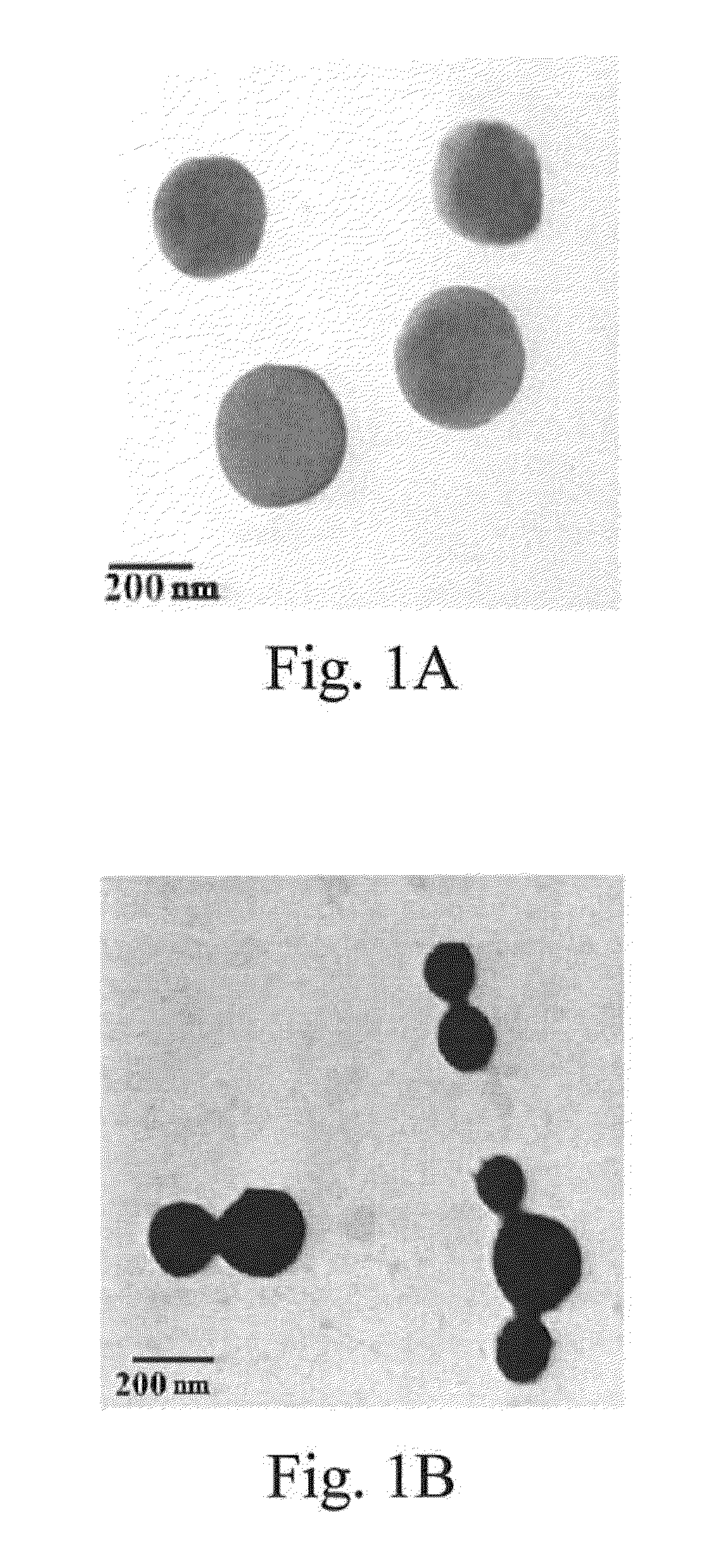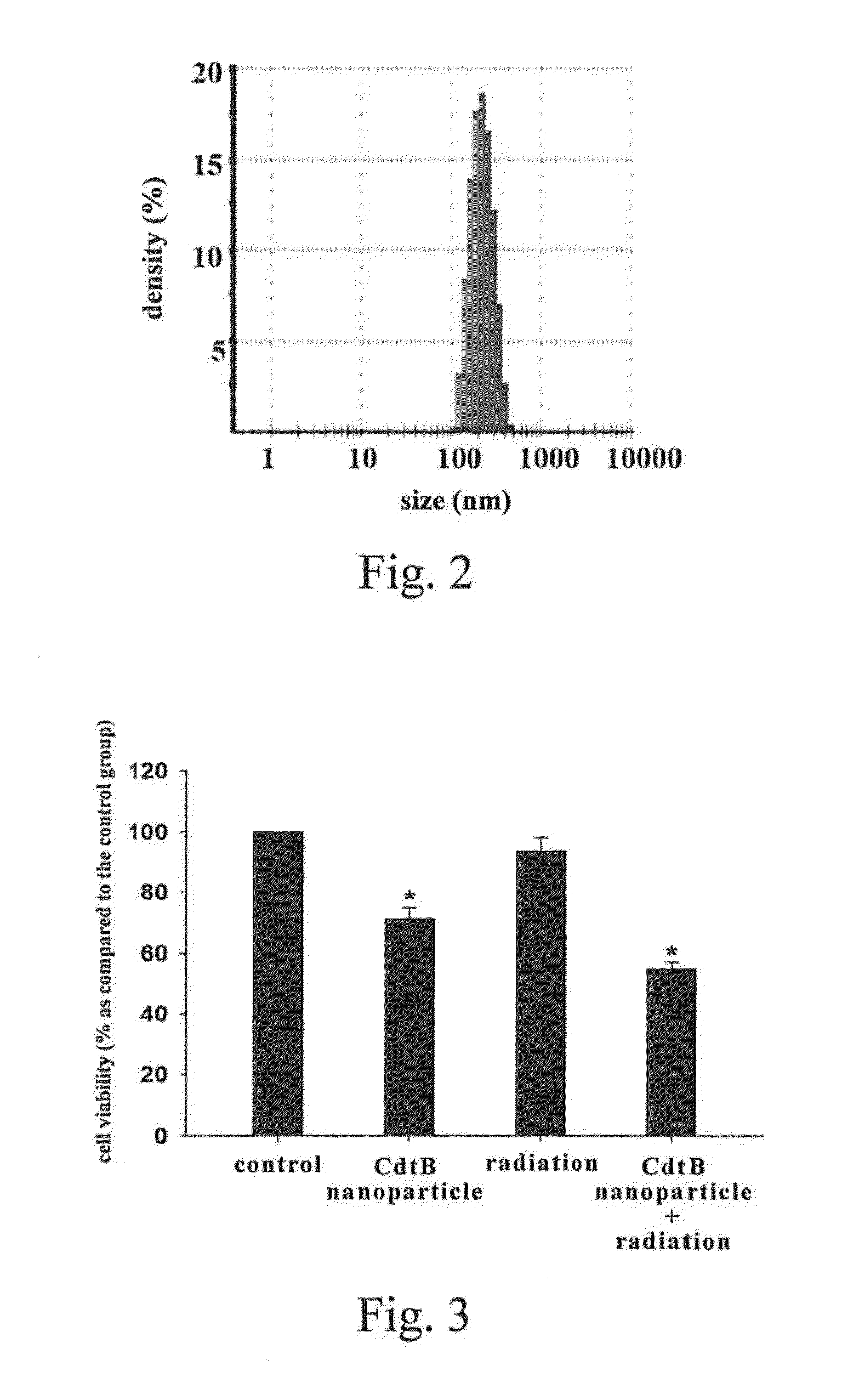Method for reducing radio-resistance of prostate cancer cells and/or treating prostate cancer
a prostate cancer and radioresistance technology, applied in the field of prostate cancer treatment, can solve the problems of prostate cancer not being effectively treated, anemia, paralysis, and patients suffering from symptoms of bone pain, and achieve the effect of reducing the radioresistance of prostate cancer cells
- Summary
- Abstract
- Description
- Claims
- Application Information
AI Technical Summary
Benefits of technology
Problems solved by technology
Method used
Image
Examples
example 1
Preparation of Nanoparticles of a Carrier Encapsulated with CdtB
[0040]First, 0.2 ml CdtB (4.0 mg / ml) and 0.2 ml heparin solution (2.0 mg / ml) were mixed to provide a mixture. The mixture was stirred in 2 ml chitosan solution (1.5 mg / ml) at room temperature for 10 minutes. Then, the mixture was centrifuged at 15,000 g for 50 minutes, and the supernatant liquid was removed and the precipitates (i.e. the carrier encapsulated with CdtB particles) were collected.
[0041]The collected precipitates were dissolved in deionized water to obtain a suspension. The form of the particles in the suspension was observed through a transmission electron microscope (TEM) and the distribution of the particle size was analyzed by dynamic light scattering spectrometer (Zetasizer ZS90, Malvern, United Kingdom). The results are shown in FIGS. 1A and 2. As shown in FIGS. 1A and 2, the carrier encapsulated with CdtB particles were smaller than 500 nm, belonging to nanoparticles, and the average particle size of...
example 2
The Cytotoxicity Experiment of the Cancer Cells
[0043]To evaluate whether the nanoparticle of a carrier encapsulated with CdtB could affect the viability of the prostate cancer cells, 1-(4,5-dimethylthiazol-2-yl)-3,5-diphenylformazan (MTT) was used in this experiment.
[0044]MTT is a soluble tetrazolium salt and can affect the respiratory chain of the mitochondria in live cells. Under the effect of succinate degydrogenase (SDH) and cytochrome c (cyt c), tetrazolium bromide in MTT structure would be a metabolic reduction and an ianthinus formazon with an insoluble crystal would be formed. Because of the absence of the succinate dehydrogenase in dead cells, the MTT can not be reduced, and the formation of the crystal substrate is also considered to be directly proportionate to the number of live cells. Furthermore, the mitochondrion is an organelle which is the most sensitive to the environment, and thus, it can be used as a marker for analyzing cell viability after the medicament treatm...
PUM
| Property | Measurement | Unit |
|---|---|---|
| Particle size | aaaaa | aaaaa |
| Particle size | aaaaa | aaaaa |
| Particle size | aaaaa | aaaaa |
Abstract
Description
Claims
Application Information
 Login to View More
Login to View More - R&D
- Intellectual Property
- Life Sciences
- Materials
- Tech Scout
- Unparalleled Data Quality
- Higher Quality Content
- 60% Fewer Hallucinations
Browse by: Latest US Patents, China's latest patents, Technical Efficacy Thesaurus, Application Domain, Technology Topic, Popular Technical Reports.
© 2025 PatSnap. All rights reserved.Legal|Privacy policy|Modern Slavery Act Transparency Statement|Sitemap|About US| Contact US: help@patsnap.com


